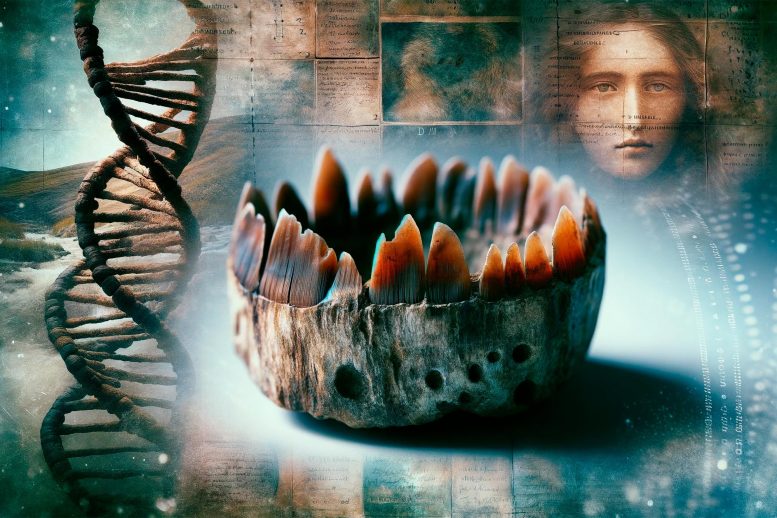
Research on 10,000-year-old birch tar samples from Mesolithic Scandinavia indicates that hunter-gatherers likely had poor oral health, with a high probability of gum disease and tooth decay, and reveals insights into their diet and lifestyle. Credit: SciTechDaily.com
Mesolithic Scandinavians likely faced oral health issues, with studies on ancient birch tar revealing signs of gum disease, tooth decay, and diverse dietary habits.
Members of a hunter-gatherer group that lived in south-western Scandinavia during the Mesolithic era — approximately 10,000 years ago — may have been affected by tooth decay and gum disease, according to a study published today (January 18) in Scientific Reports.
DNA Analysis of Birch Tar
Emrah Kırdök, Anders Götherström, and colleagues sequenced the DNA found on three pieces of birch tar — a substance made from heated birch bark — that were excavated in the 1990s from Huseby Klev, Sweden and have been dated to between 9,890 and 9,540 years old. They created profiles of the microbial, plant, and animal species DNA found on each sample and compared these to those previously reported for modern human samples, ancient human dental plaque, and a 6,000-year-old chewed birch tar sample.
Findings on Oral Health
The authors found that the microbial profiles of the birch tar samples were most similar to microbes found in the modern human mouth, in ancient human dental plaque, and in a 6,000-year-old chewed birch tar sample. This suggests that the samples from Huseby Klev were chewed by humans. They also found that they contained an increased abundance of several bacteria that are commonly associated with gum disease — such as Treponema denticola, Streptococcus anginosus, and Slackia exigua — and tooth decay — such as Streptococcus sobrinus and Parascardovia denticolens.
Based on the relative abundance of microbial species in the birch tar samples and using machine learning models, the authors estimate that the probability that members of the hunter-gatherer group were affected by gum disease is between 70 and 80%. The authors suggest that the wider use of teeth to perform tasks involving gripping, cutting and tearing in ancient hunter-gatherer societies may have increased their risk of coming into contact with microbial species that cause gum disease.
Insights into Diet and Material Use
In addition to microbial DNA, the authors identified DNA sequences consistent with those from a range of plant and animal species, including hazelnut, apple, mistletoe, red fox, grey wolf, mallard, limpet, and brown trout. These could reflect the materials that members of the hunter-gatherer group chewed prior to the birch tar samples. The authors speculate that these materials could have included food sources, furs, and bone tools.
Conclusions on Mesolithic Oral Health
The findings highlight the poor oral health of a group of Mesolithic Scandinavian hunter-gatherers and provide insight into their diet, material use, and local environment.
Reference: “Metagenomic analysis of Mesolithic chewed pitch reveals poor oral health among stone age individuals” by Emrah Kırdök, Natalija Kashuba, Hege Damlien, Mikael A. Manninen, Bengt Nordqvist, Anna Kjellström, Mattias Jakobsson, A. Michael Lindberg, Jan Storå, Per Persson, Björn Andersson, Andrés Aravena and Anders Götherström, 18 January 2024, Scientific Reports.
DOI: 10.1038/s41598-023-48762-6









Be the first to comment on "DNA From Ancient Gum Reveals Secrets of Stone Age Dentistry"